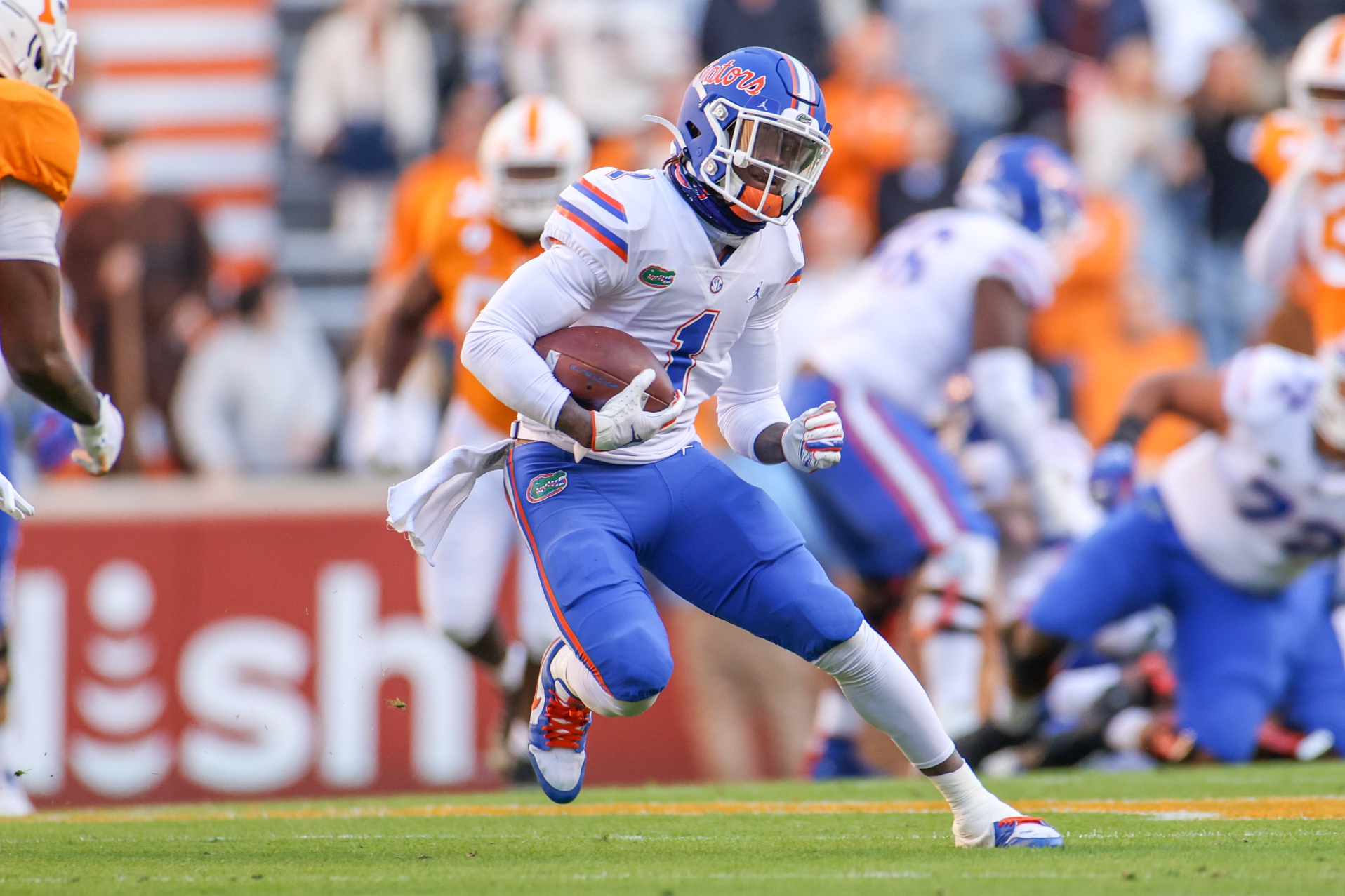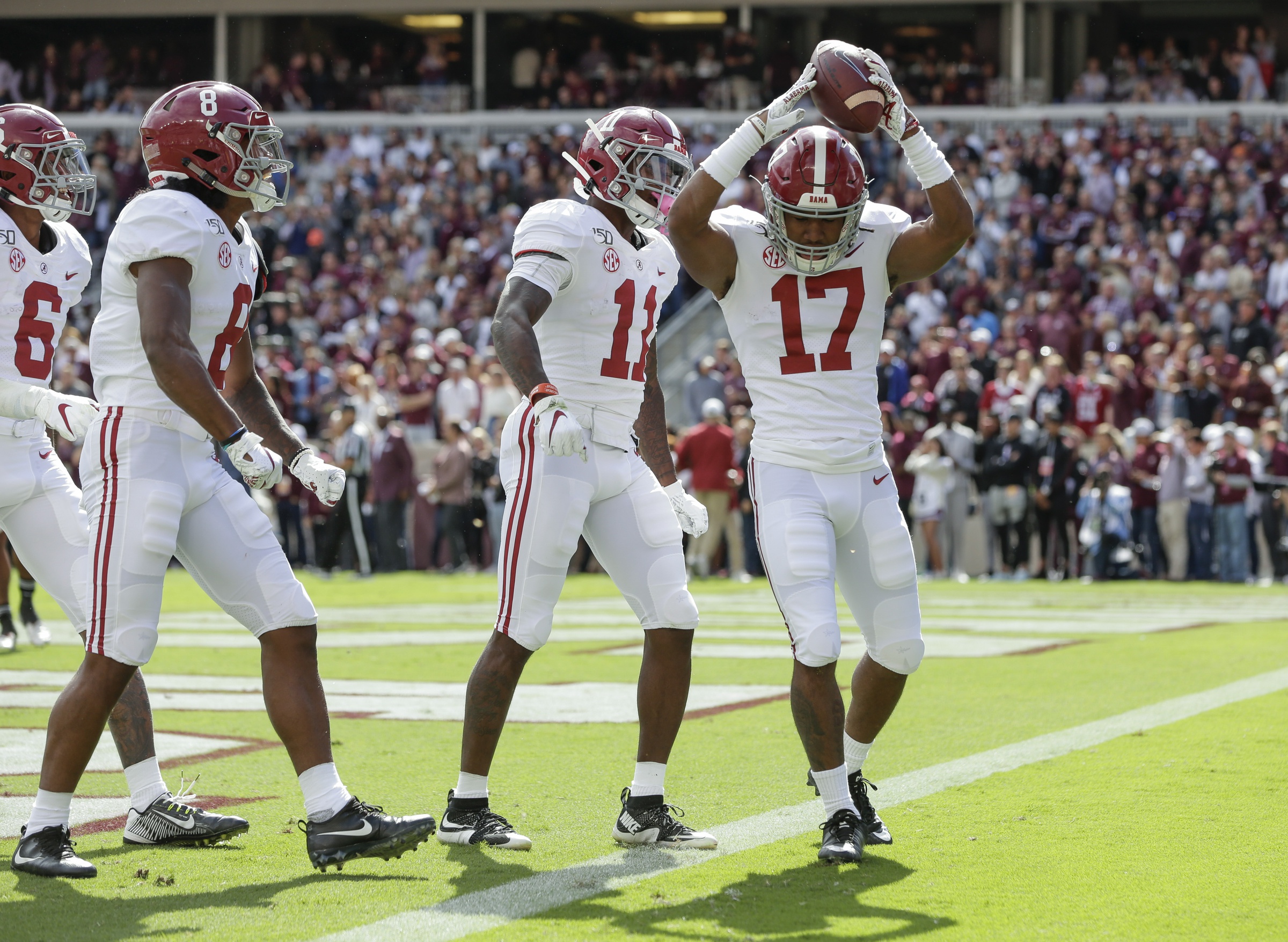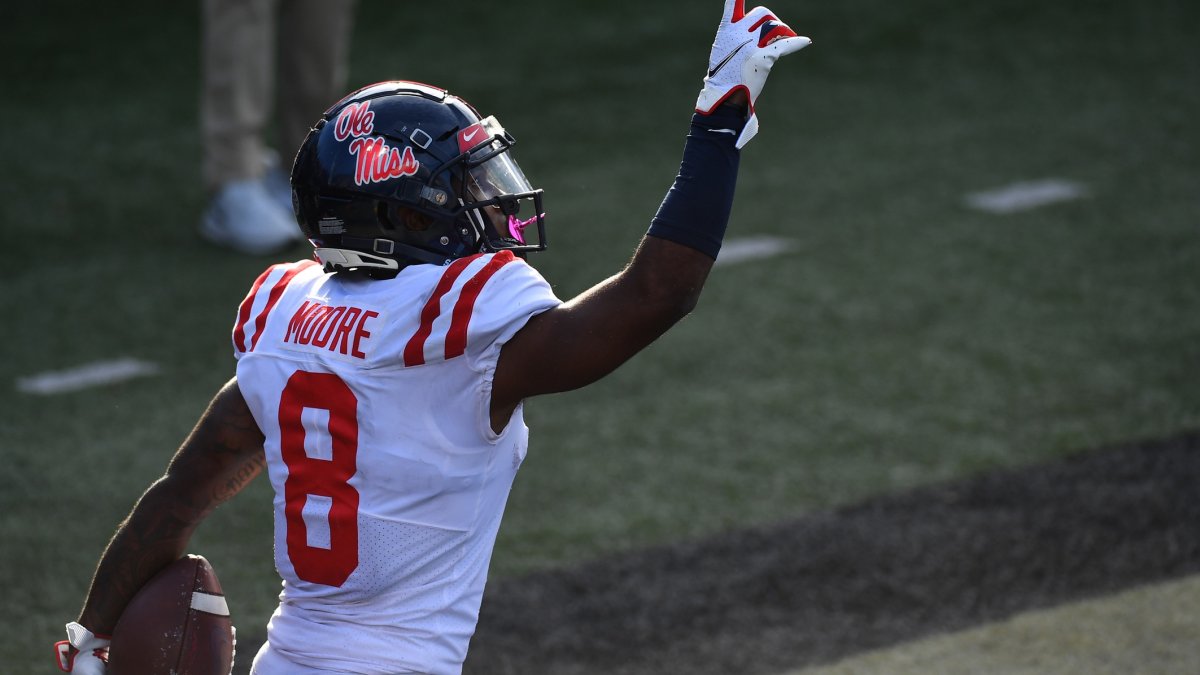Tom Brady’s last two seasons prove just how crucial a dynamic receiving corps can be to a team's Super Bowl hopes.
Brady put up pedestrian numbers with arguably the worst receiving corps in the league in 2019, but he flipped that on its head with the Tampa Bay Buccaneers last season, leading Tampa Bay to a Super Bowl title and earning the second-highest grade among quarterbacks in the process. Having a talented and deep group of wide receivers, tight ends and pass-catching running backs matters.
These are my picks for the five teams that did the most this offseason to improve their receiving corps heading into the 2021 season.
1. New York Jets
There have been times over the past two seasons when Jamison Crowder was the primary receiving option for the Jets. Crowder is a solid complementary piece to have in the slot, but he’s not exactly someone who will strike fear into defenses. And New York has added enough depth at wide receiver this offseason that Crowder could realistically be released in a move that would save the team over $10 million in 2021.
Elijah Moore stands out as Crowder’s potential replacement in the slot after the Jets spent the No. 34 overall pick on the Ole Miss wide receiver in the 2021 NFL Draft. Moore’s combination of speed, quicks and toughness is ideal inside, but I wouldn’t pigeonhole him in the slot just yet. Few receivers in college football were more productive than Moore in 2020. He put up over 80 receptions and nearly 1,200 receiving yards in just eight games with the Rebels.
Free-agent acquisitions Corey Davis and Keelan Cole might not be true No. 1 options, but they can improve this passing offense. Davis was one of the top free-agent wide receivers on the market. He has come up big in contested catch situations these last few years and is coming off a career-high 85.3 PFF grade last season in Tennessee. Cole brings some inside-outside versatility, having played both roles in Jacksonville.
Fourth-round running back selection Michael Carter is worth a mention, as well. Carter earned an 88.6 receiving grade with UNC in 2020, and as the PFF Draft Guide puts it, he’s an accomplished receiver who can pants linebackers in coverage.
Between those additions to the receiving corps and the Alijah Vera-Tucker pick to solidify the offensive line, New York is building around Zach Wilson the right way. It’s the opposite approach to the one they took with Sam Darnold.

2. New York Giants
The Giants came into this offseason needing to add several pieces in the receiving corps and along the offensive line to give Daniel Jones a better opportunity to succeed heading into his third season. The latter has not materialized, but Jones will have a more talented group of pass-catchers at his disposal heading into 2021.
Kenny Golladay was the last true X receiver on the free-agent market after Allen Robinson and Chris Godwin had received the franchise tag. He is the kind of player the Giants were missing in 2020. Golladay’s 53 contested catches over the past three seasons are second only to Robinson at the position, even with all the missed time in 2020. He’s a downfield, jump-ball threat Jones can trust in 50-50 situations.
The Giants followed that splash free-agent signing by spending their first-round pick on another wide receiver. Per Zack Rosenblatt, Toney said that he models his game after Alvin Kamara, and like Kamara, his after-the-catch ability is rare. That’s something New York needed to add at wide receiver. The Giants’ wide receivers averaged 3.0 yards after the catch per reception in 2020, dead last in the NFL. Toney should help turn that number around.
Veteran free-agent additions like Kyle Rudolph and John Ross round out the new incoming class. Now, the Giants have to figure out how to keep Jones upright with a questionable offensive line in front of him.
3. Baltimore Ravens
The Ravens’ WR2 in 2020 was some combination of Willie Snead IV and Miles Boykin. Lamar Jackson hasn’t been the most accurate quarterback in the world, and Baltimore’s passing offense has been unimaginative at times, but the receiving corps hasn't exactly been bursting with talent. The Ravens have set out to change that this offseason.
Baltimore's 2021 NFL Draft yielded Minnesota’s Rashod Bateman and Oklahoma State’s Tylan Wallace. Both of those receivers were highly productive over the past two seasons at their respective schools. In fact, Bateman and Wallace joined Alabama’s DeVonta Smith as the only three wide receivers in this class to average at least 3.0 receiving yards per route run in each of the past two seasons.
Bateman, a top-20 player on PFF’s Big Board, is particularly interesting in this offense. He has the catch radius that you want to pair with Jackson and is one of the better technicians in this class when it comes to his release package and route running. He can make an early impact both in the slot and out wide.
The Ravens also added Sammy Watkins in free agency, a somewhat forgotten man after several underwhelming and injury-impacted seasons in Kansas City. When healthy, he has shown he can be a No. 1 option in the passing game. Watkins was an important part of the Chiefs’ Super Bowl run in 2019, with over 200 receiving yards across the AFC championship game and Super Bowl. It just all comes down to whether he can stay healthy.
It’s shaping up to be a much more well-rounded receiving corps in 2021 that isn’t so reliant on Marquise Brown and Mark Andrews.
4. Miami Dolphins
The Dolphins already had pieces in place in their receiving corps last season. DeVante Parker’s giant leap came during the 2019 season, and it was Mike Gesicki’s turn last year. The 2018 second-round pick improved his PFF grade from 60.5 in 2019 to 78.1 in 2020. That’s not a terrible foundation to start with.
Miami has built on that foundation this offseason with speed. Will Fuller V and Jaylen Waddle will give the Dolphins two players defenses have to account for on every play. If they don’t, it could mean a 50-plus-yard touchdown.
Fuller enjoyed a career year with the Houston Texans in 2020, his first season not playing alongside DeAndre Hopkins. He averaged 16.6 yards per reception and earned an 86.2 overall grade before a suspension cut his season short. That will keep Fuller from playing in the 2021 season opener, but the Dolphins will hope to have his game-changing speed available for their final 16 games next season.
Waddle, the team’s other major addition this offseason, also has rare speed and athleticism. No Power Five wide receiver with 100-plus receptions since 2014 averaged more yards after the catch per reception than Waddle (9.8). He’s the best after-the-catch receiver in this draft class. Waddle’s also a threat to challenge defenses vertically with rare speed and explosiveness. We’ve already seen the Waddle-Tua Tagovailoa combination do serious damage at Alabama.
A Fuller-Waddle-Jakeem Grant trio at wide receiver is more explosive than any other trio that an NFL offense can put on the field.

5. New England Patriots
No team dumped more resources into free agency this offseason than the Patriots, and the majority of those resources went into the tight end and wide receiver positions. That’s for good reason. Jakobi Meyers, a 2019 undrafted free agent with 59 receptions last season, profiled as the team’s top returning receiver.
New England is getting back to what worked for them so well early in the 2010s with a two-headed threat at tight end. The Patriots made Hunter Henry and Jonnu Smith two of the five highest-paid tight ends in the NFL on a per-year basis. The only two tight ends averaging more per year than either Henry or Smith are now Travis Kelce and George Kittle.
Henry got off to a terrific start to his career, earning PFF grades of 83.0 or higher in each of his first two years in the NFL, but he hasn’t quite been the same player after suffering several injuries. Still, he profiles as one of the better all-around tight ends in the league. Smith, meanwhile, was utilized in a more specific role in Tennessee. The Titans got Smith the ball with room to run, taking advantage of his athleticism that has led to an average of over seven yards after the catch per reception across his four-year career.
The Patriots also added Nelson Agholor and Kendrick Bourne in free agency. Agholor is a bit of a boom-or-bust player with two big years surrounded by more disappointing seasons. He’s coming off one of the big years with the Las Vegas Raiders in 2020. His six touchdown receptions on passes 20 or more yards downfield were fewer than just Tyreek Hill. Bourne profiles as a reliable complementary piece who hasn’t been featured in San Francisco’s offense, given some of their other options in the passing game.
New England is still missing a true No. 1 receiver, but they’ve clearly raised the talent level of the group as a whole.
Honorable mention: Washington Football Team
It was tough to not include Washington inside the top five, but the list of teams that got significantly better at receiver this offseason is crowded.
The Football Team has done an excellent job of surrounding Terry McLaurin with more talent, between the free-agent acquisitions of Curtis Samuel and Adam Humphries and the draft selection of Dyami Brown. Their offense should be much more exciting in 2021, with Ryan Fitzpatrick being more willing to push the ball downfield to a receiving corps that has added legitimate talent this offseason.




 © 2024 PFF - all rights reserved.
© 2024 PFF - all rights reserved.